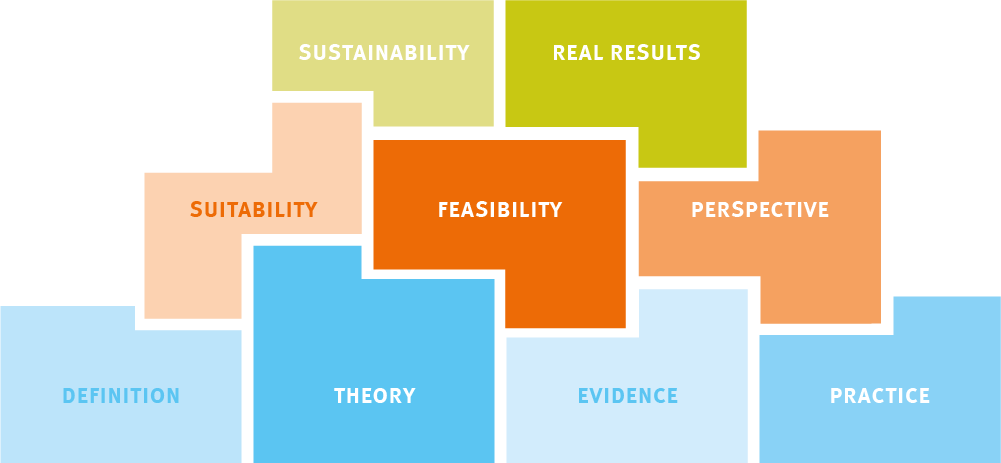Selecting an anti-bullying approach is an important decision.
The decision-making process is multifaceted, and it will require some time to gather all the necessary information.
The
guide to STEPS organises the relevant information under 9 key concepts. It provides you with a transparent process for your selection.
STEPS framework
The STEPS decision-making framework is composed of 3 layers of questions that schools need to answer in order to choose an anti-bullying approach for their school.
-
Layer 1:
Does it work? What is the evidence?
Through examining Definition, Theory, Evidence and Practice. -
Layer 2:
Will it work to achieve our school's goals?
Through examining Suitability, Feasibility and Perspective. -
Layer 3:
How will we know it has worked?
Through examining Sustainability and Real results.
In combination, these 3 layers with the 9 key concepts make up the STEPS framework.

Download the STEPS framework.
The 9 concepts each present a key question to assist schools to examine an anti-bullying approach.
Each concept is explored through extensive background information and an explanation of key concepts, and concludes with further prompt questions for schools.
 Layer 1:
Layer 1:
Does it work? What is the evidence?
| Definition | Is the approach based on a contemporary understanding of bullying that is consistent with the school's definition? |
| Theory | Is the approach based on a sound theory that draws on the existing knowledge from previous research in bullying? |
| Evidence | Does the approach have evidence from well-designed research which shows measurable change in behaviour? |
| Practice | Have other schools used this approach and achieved positive outcomes? |
 Layer 2:
Layer 2:
Will it work to achieve our school's goals?
| Suitability | Does the approach address the target students and needs that the school has identified? |
| Feasibility | Is the approach feasible and practical in the school context? |
| Perspective | Is the philosophical perspective underpinning the approach compatible with the school's approach to behaviour, learning and student wellbeing? |
 Layer 3:
Layer 3:
How will we know it has worked?
| Sustainability | Can the school implement and sustain the approach as required for it to be effective? |
| Real results | Does the approach indicate how outcomes will be measured and timeframes within which to expect to see real results? |
Each concept is explored through extensive background information and an explanation of key concepts, and concludes with further prompt questions for schools.